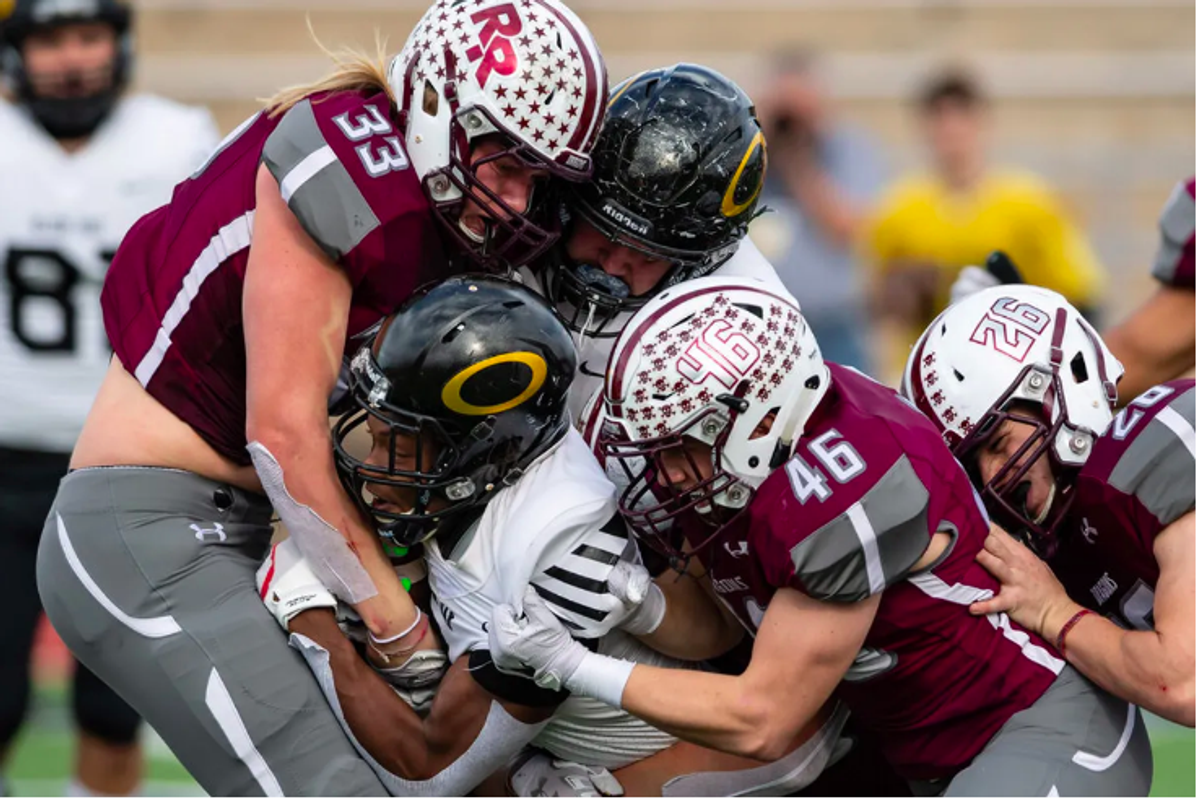
Via VYPE
Last season if a player was flagged for targeting he was then ejected for the remainder of the game.
Originally Appeared on VYPE
HOUSTON – Getting flagged for targeting won't mean an automatic ejection anymore in Texas high school football.
Heading into the 2019 season, the UIL has added a wrinkle to the targeting rule where referees will have the option to flag a player for targeting, which will result in a 15-yard penalty but not an automatic ejection if it is deemed that the play was made without "intent to harm".
"What coaches, officials and we all agree on is that by having that differentiation you will see officials be more comfortable calling targeting," UIL Director of Athletics Dr. Susan Elza said. "What we found in feedback we got from coaches and officials was there were times that it was probably targeting but I'm not sure. But if I throw this flag and call it that kid's out for the rest of the game. If it's early in the first quarter, that's a big deal. So, they were keeping the flag in their pocket, they were going to make absolute sure it was targeting."
Last season if a player was flagged for targeting he was then ejected for the remainder of the game. Now, officials will have an option.
If it is deemed that the player did not have "intent to harm" on the play, then they can stay in the game but if they get a second targeting penalty of that sort they are then ejected.
"TASO football is very excited about this," Elza said. "They think it's going to make it a lot easier on the officials to feel comfortable making that call."
The story continues here
Most Popular
SportsMap Emails
Are Awesome
Oswald Peraza hit a two-run single in the ninth inning to help the Los Angeles Angels snap a three-game losing skid by beating the Houston Astros 4-1 on Saturday night.
Peraza entered the game as a defensive replacement in the seventh inning and hit a bases-loaded fly ball to deep right field that eluded the outstretched glove of Cam Smith. It was the fourth straight hit off Astros closer Bryan Abreu (3-4), who had not allowed a run in his previous 12 appearances.
The Angels third run of the ninth inning scored when Mike Trout walked with the bases loaded.
Kyle Hendricks allowed one run while scattering seven hits over six innings. He held the Astros to 1 for 8 with runners in scoring position, the one hit coming on Jesús Sánchez’s third-inning infield single that scored Jeremy Peña.
Reid Detmers worked around a leadoff walk to keep the Astros scoreless in the seventh, and José Fermin (3-2) retired the side in order in the eighth before Kenley Jansen worked a scoreless ninth to earn his 24th save.
Houston’s Spencer Arrighetti struck out a season-high eight batters over 6 1/3 innings. The only hit he allowed was Zach Neto’s third-inning solo home run.
Yordan Alvarez had two hits for the Astros, who remained three games ahead of Seattle for first place in the AL West.
Key moment
Peraza’s two-run single to deep right field that broke a 1-1 tie in the ninth.
Key Stat
Opponents were 5 for 44 against Abreu in August before he allowed four straight hits in the ninth.
Up next
Astros RHP Hunter Brown (10-6, 2.37 ERA) faces RHP José Soriano (9-9, 3.85) when the series continues Sunday.

